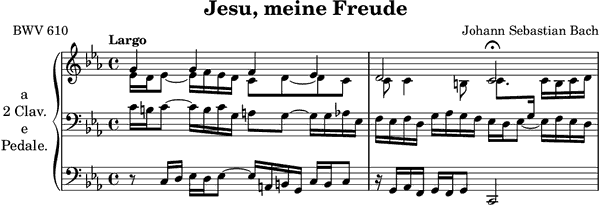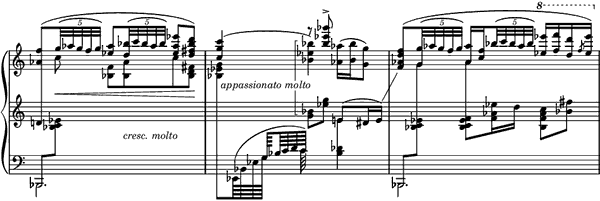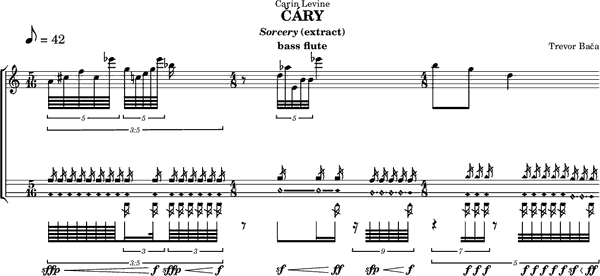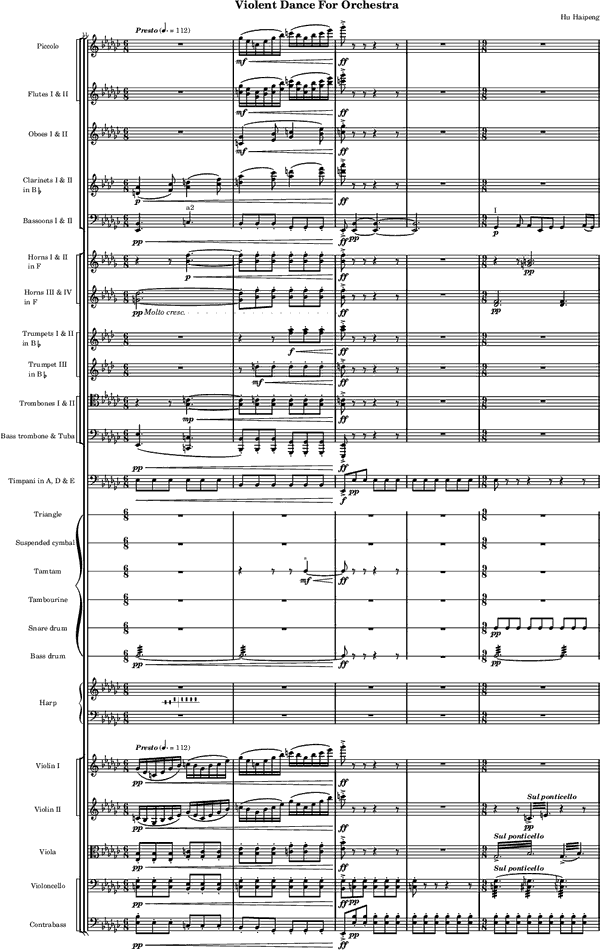例子
LilyPond is a powerful and flexible tool for engraving tasks of all kinds. Please browse our gallery of examples and be inspired!
古典音乐
This organ work by J.S. Bach is a fairly typical engraving project in LilyPond.
复杂的乐谱 Complex Notation
This example from Goyescas by Enrique Granados shows some of the more advanced features of typesetting, including kneed beams, cross-staff stems, and voice-follow lines.
早期音乐
LilyPond also supports various types of ancient notation, such as this passage of Gregorian chant.
现代音乐
Contemporary composers find LilyPond well-suited to displaying unusual notation. Here is an excerpt from Trevor Bača’s Čáry, for unaccompanied bass flute.
有效,灵活地创造表演材料
Various performance materials can be created from the same source code. This is an excerpt of Nicolas Sceaux’s engraving of Handel’s Giulio Cesare, in full score, piano-vocal reduction, and a violin part.
TAB 吉他谱 (Tablature)
LilyPond 支持 TAB 吉他谱 (六线谱),which can be customized to suit any instrument that reads from tablature. The tablature staff is generated automatically from notes entered for the 5-line staff.
申克分析图
Standard output can be modified heavily. Here is an impressive Schenkerian analysis, created by Kris Schaffer, for an article in Linux Journal. The colors have been added for better visibility.
声乐作品
LilyPond is excellent for vocal music of all kinds, from sacred hymns to opera. Here is a 中世纪经文歌 with slightly unusual requirements. The tenor voice is written in a different meter than the others, but must line up as if it were in the same meter. LilyPond handles this most elegantly. Note also the incipits with Vaticana style clefs, the slashed stems indicating plicated notes, and the ligature braces above certain groups of notes.
流行音乐
It is simple to create pop lead sheets with melody, lyrics, chord names, and fretboards. In this example you see some of the predefined fretboard diagrams, but these can be heavily customized to suit nearly any situation.
大型项目
LilyPond is excellent for large projects like operas or works for full symphony orchestra, as well. In addition, the text-based input provides greater accessibility – this example was contributed by Hu Haipeng, a blind composer.












